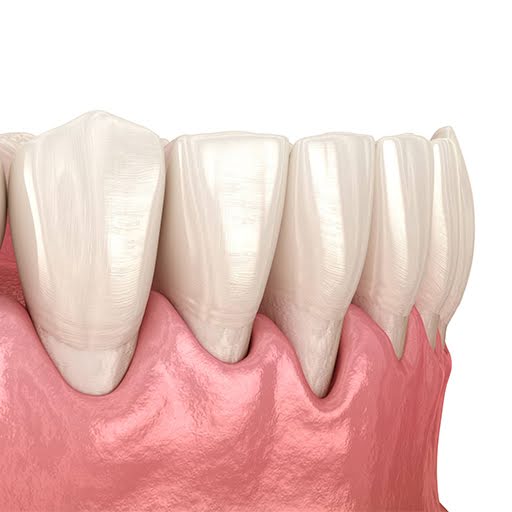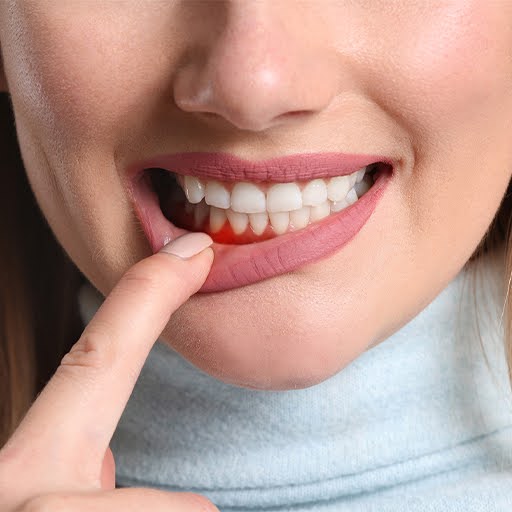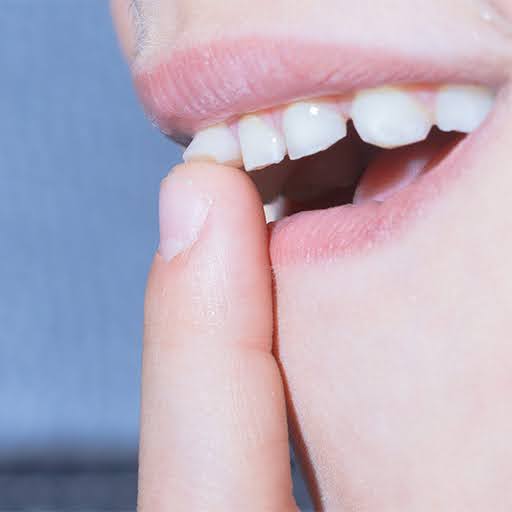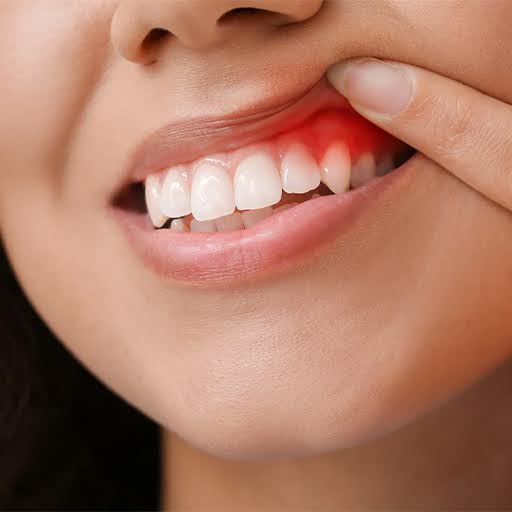
Introduction
People often ignore gum health until issues occur. Gum grafting is a dental procedure that fixes receding gums and can stop more problems from happening. Spotting early signs can protect your gums and teeth. In this post, we will discuss six warning signs that show you might need gum grafting. Knowing these signs can help you take action early and keep your dental health in good shape.
Summary
2. Increased Tooth Sensitivity
6. Gum Pockets and Inflammation
1. Persistent Gum Recession

Gum recession is a common sign that you might need gum grafting treatment. If your gums are pulling away from your teeth, creating pockets, or if your teeth look longer, you might have gum recession.
Gum recession can happen for several reasons, such as brushing too hard, having gum diseases, or even due to genetics. When gums recede, they expose the tooth’s root, which can cause sensitivity and a higher risk of decay. If ignored, this condition can severely damage the bone structure supporting your teeth. Getting gum grafting early can help restore your gums and protect your teeth.
Also, if you feel a notch near the gum line or have root sensitivity, it’s important to see your dentist. Gum grafting can cover the exposed roots, reducing sensitivity and stopping further recession. By taking care of this issue quickly, you not only improve your oral health but also make your smile look better.
2. Increased Tooth Sensitivity

Increased tooth sensitivity is another sign that you might need gum grafting. Do you feel sharp pain when eating or drinking something hot or cold? This pain is often caused by exposed tooth roots due to receding gums
When gums recede, they expose the sensitive part of your teeth called dentin. This exposure allows hot and cold stimuli to reach the nerve endings inside the tooth, causing discomfort. This can make eating and drinking very unpleasant.
Gum grafting can cover these exposed roots and significantly reduce tooth sensitivity. By getting this treatment, you not only relieve the discomfort but also prevent further dental problems. Acting promptly ensures your teeth stay healthy and functional, allowing you to enjoy your favorite foods and drinks without pain.
3. Noticeable Gum Bleeding

Bleeding gums are a sign that something might be wrong with your oral health. While occasional bleeding can happen from brushing or flossing too hard, frequent and unexplained bleeding is concerning.
Bleeding gums can indicate gum diseases like gingivitis or periodontitis. These diseases cause inflammation and infection in the gums, leading to their deterioration. If untreated, they can seriously damage the gum tissue and underlying bone. Gum grafting can restore damaged gum tissue, providing a healthy base for your teeth.
It’s important to notice if your gums bleed while brushing, flossing, or eating. Early treatment with gum grafting can prevent further problems, keeping your gums and teeth healthy. Seeing your dentist can help identify the cause and find the right treatment to improve your oral health.
4. Loose or Shifting Teeth

Loose or shifting teeth can be a worrying sign that something is wrong with your gum health. If your teeth feel loose or start shifting, it could mean you have severe gum disease or bone loss, both of which might need gum grafting treatment.
Healthy gums are essential for keeping your teeth stable. When gums recede or become diseased, they can’t support your teeth properly, causing them to feel loose or move out of place. Ignoring this can lead to tooth loss and more dental problems.
Gum grafting can help rebuild and strengthen gum tissue, providing the support your teeth need. Addressing the issue early can prevent tooth loss and keep your smile healthy and stable. Regular dental check-ups are important for spotting these problems early and taking the right steps to protect your oral health.
5. Chronic Bad Breath

Chronic bad breath, or halitosis, can be more than just a social problem; it might signal underlying gum issues that need immediate attention. If your bad breath continues despite good oral hygiene, it could be due to gum disease or other dental problems.
Unhealthy gums can harbor bacteria and plaque, leading to persistent bad breath. These bacteria produce foul-smelling compounds that regular brushing and flossing can’t eliminate. Gum grafting can remove diseased gum tissue and restore healthy gums, addressing the root cause of bad breath.
If you constantly struggle with bad breath despite good oral care, it’s important to see your dentist. They can check your gum health and suggest treatments like gum grafting to solve the problem. Acting promptly can improve your breath and overall oral health, boosting your confidence and social interactions.
6. Gum Pockets and Inflammation

Gum pockets and inflammation are major signs of periodontal disease and might require gum grafting treatment. If you notice deep pockets forming between your gums and teeth or have persistent gum inflammation, it’s important to get professional dental care.
Gum pockets happen when the gums pull away from the teeth, creating spaces where bacteria can build up. This often comes with inflammation, causing redness, swelling, and discomfort in the gums. If untreated, it can lead to serious gum and bone damage, eventually causing tooth loss.
Gum grafting can help reduce these pockets and restore healthy gum tissue, preventing further damage and improving oral health. Early treatment is crucial for managing gum disease and saving your natural teeth. Regular dental check-ups and professional cleanings are essential for preventing and detecting these issues early, keeping your gums and teeth healthy.
FAQs
Q.1. What is gum grafting?
A.1. Gum grafting is a surgical procedure that restores receding gums by attaching healthy tissue from another part of the mouth to the affected area.
Q.2. Is gum grafting painful?
A.2. The procedure is typically performed under local anesthesia, so patients do not feel pain during the surgery. After surgery, any discomfort you feel can be eased with pain relievers prescribed by your doctor.
Q.3. How long does it take to recover from gum grafting?
A.3. Recovery time varies but generally takes about one to two weeks. Following your dentist’s care instructions can help ensure a smooth recovery.
Q.4. Can gum grafting fail?
A.4. While success rates are high, complications can occur. Following post-surgery care guidelines and attending follow-up appointments are crucial for a successful outcome.
Q.5. How do I know if I need gum grafting?
A.5. If you experience gum recession, increased tooth sensitivity, persistent gum bleeding, or other signs mentioned in this post, consult your dentist for an evaluation.
Conclusion
Recognizing the signs that you might need gum grafting treatment is crucial for maintaining your oral health. These signs include persistent gum recession, increased tooth sensitivity, noticeable gum bleeding, loose or shifting teeth, chronic bad breath, and gum pockets or inflammation. By understanding these indicators and seeking professional dental care promptly, you can ensure your gums and teeth stay healthy, functional, and aesthetically pleasing.
For personalized assistance or to schedule a consultation, please get in touch with our dedicated team at (267) 908-4867 or visit our website at https://premierperiodonticspa.com/contact-us/. Your smile is our top priority, and we’re committed to providing you with the guidance and support you need for a comfortable and successful dental journey. Trust us to prioritize your oral health and walk with you toward a vibrant and healthy smile. We look forward to collaborating with you to achieve your oral health goals.









